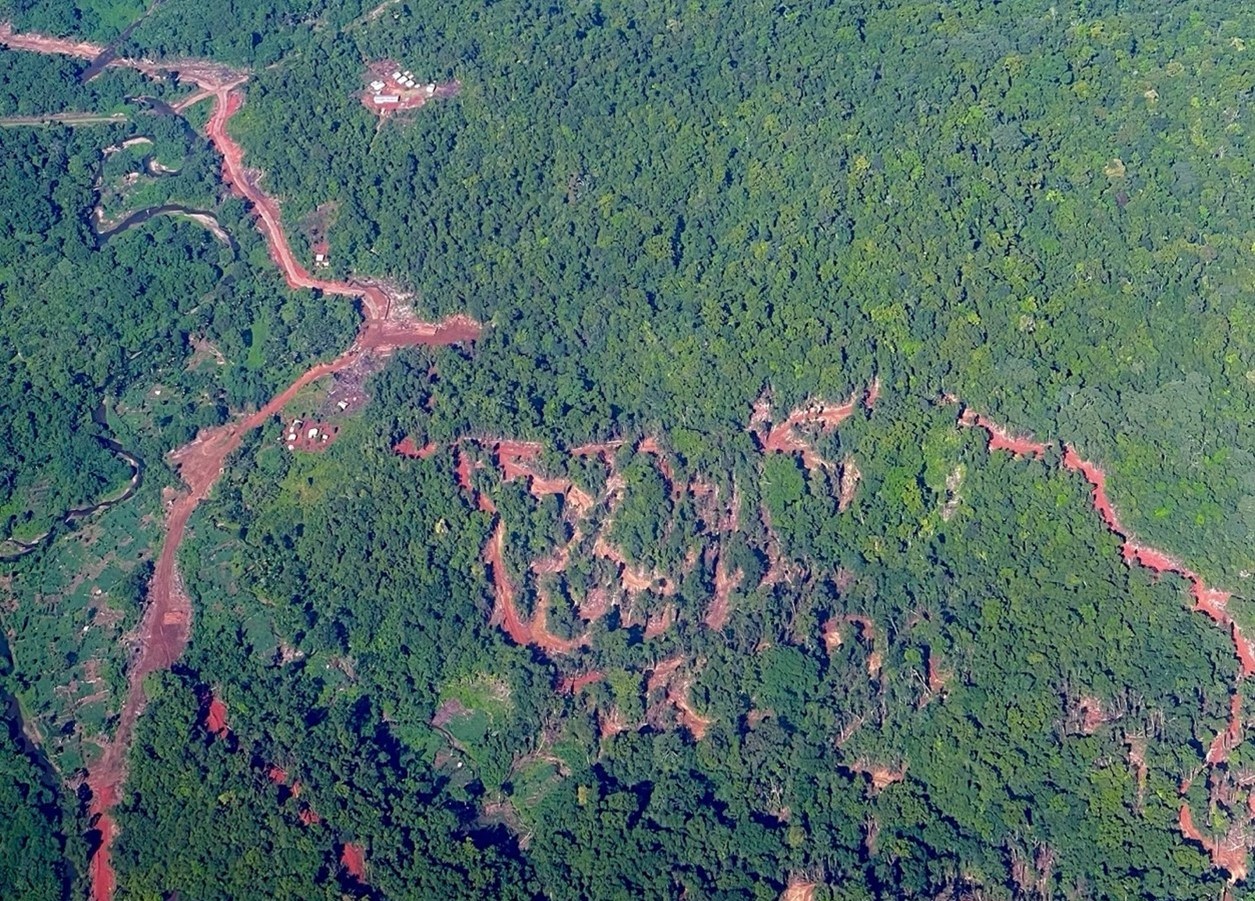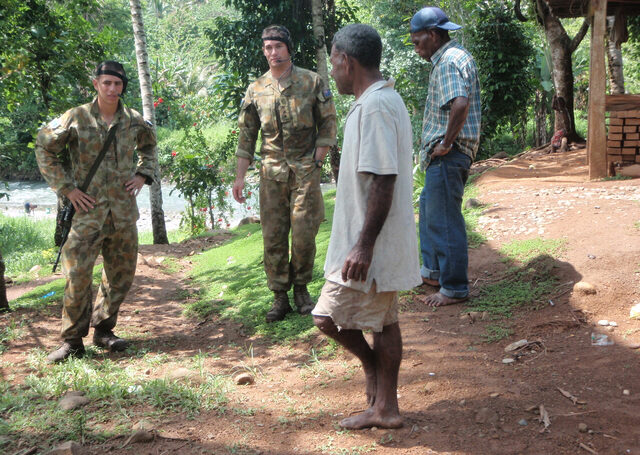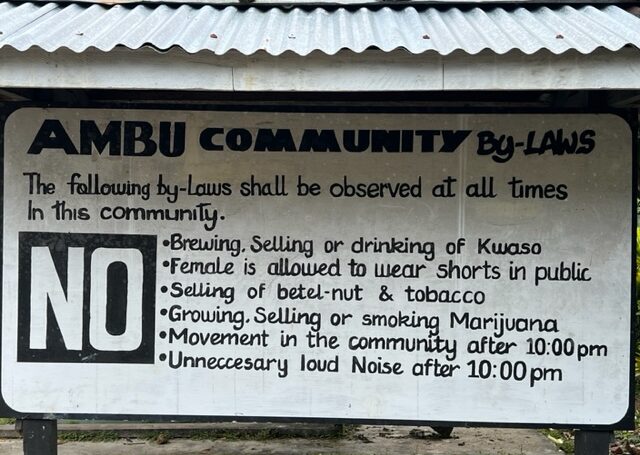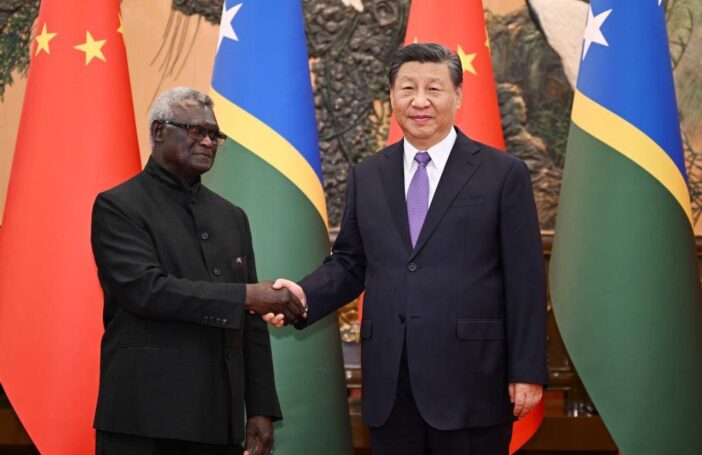In the years following the 1998-2003 ethnic tensions in Solomon Islands, the World Bank assisted the Solomon Islands government in planning a project to support rural communities. This resulted in the Rural Development Program (RDP), a community-driven development intervention that captured community needs and delivered small-scale infrastructure, access to services, and livelihoods support in response.
Over the course of RDPI (2009-14) and II (2014-22), 663 subprojects were built, including wells, classrooms, health posts, solar electrification, cyclone shelters, and so on. In Solomon Islands, such a project was no mean feat – the country consists of some 900 islands, including some of the most remote island communities in the world. Costs are high, shipping is irregular, and construction materials are unavailable in communities which lie a week’s ocean voyage away from the nearest port.
We assessed RDP’s progress as the project ended, using random sampling methods to identify and visit 68 infrastructure projects and 20 agriculture partnerships in Guadalcanal, Isabel, Makira-Ulawa, Malaita and Temotu provinces. Water supply was RDP’s most popular subproject, constituting 51% of subprojects chosen in RDP’s last two cycles. The most common water subprojects were communal rain catchment systems, comprising gutters, pipes and 10,000-litre polytanks connected to a minimum of four and a maximum of 30 public tap stands per community. Other water systems included wells/boreholes, and local piped water systems – either gravity-fed or powered by solar/diesel pumps.
There are plenty of reasons communities might select a water subproject. Time-saving is usually the key consideration. But of the 34 water subprojects visited, 21 sets of village leaders and community members reported that these projects were chosen in response to damage to existing water supplies caused by logging: this was 62% of all water subprojects we visited.
Logging dominates the Solomon Islands economy, and while some forestry operations work in a sustainable manner, most do not. Global Witness noted (in 2018) that Solomon Islands exports an astonishing 19 times more timber than is sustainable. Despite this, the rate of logging is increasing.
Many communities we visited volunteered that most water subprojects were selected to replace water sources which were contaminated by logging operations. Topsoil erosion followed the loss of trees, and this runoff and siltification rendered traditional water sources undrinkable. This has occurred in every part of Solomon Islands, except for the Reef Islands in Temotu Province, where logging is banned by traditional landowners (Tetepare, in Western Province, is the last completely unlogged island in the Pacific, but it has no permanent human settlement).
The damage caused by logging is especially apparent on San Cristobal, the largest island in Makira-Ulawa province. Nearly every river runs turbid into a ring of muddy sea around much of the island, and nearly every natural harbour shelters a freighter picking up round logs. At every water subproject we visited in Makira-Ulawa and Isabel provinces, community members told us that the projects were chosen in response to logging. Communities worry that these subprojects might also become useless over time, as secondary catchments and water piping from more distant/unimpacted water sources will also likely be rendered unusable as logging operations expand further into the interior. This is one reason why rain catchments were popular.
How, if land is ‘owned’ by traditional landowners, is this damage allowed to occur? The political economy of logging in Solomon Islands has been written about extensively elsewhere, but it’s worth summarising the processes by which logging companies gain access to such resources.
At the national and provincial levels, politicians are elected with the financial support of logging companies; some politicians own their own logging companies as well. At the community level, even with the support they provide to politicians, loggers still need to purchase logging rights from local landowners. Land ownership tends to be communal, and poorly defined, or complicated by competing claims. As a result, logging companies easily find people claiming to be traditional landowners (or to represent them) and pay those people off.
Neither donors nor multilateral institutions wish to engage Solomon Islands authorities around the issue of logging. But both government and donors find themselves funding the response to its impacts, not only regarding the loss of water sources, but disasters linked to deforestation – landslides and floods in particular. This trepidation must end. Solomon Islanders understand both the malign impact of current logging practices and their lack of say in the matter, and the country hosts a broad civil society with which to engage.
The People’s Republic of China faces its own constraints and opportunities with regard to logging. The vast majority of logs harvested in Solomon Islands are destined for the China market, and Chinese citizens and companies dominate the trade. PRC authorities engage with the local political economy in Solomon Islands as many states have done in the past – by ensuring that elites are on-side, and not being particularly concerned about communities. Global Witness and other analyses have highlighted the opportunities China has to ensure that logs reaching their market are harvested sustainably, and that China’s private sector does not abuse the power it wields in local politics. Any reduction in the aforementioned impacts of logging would contribute to China’s public relations efforts.
Changes in political economy, however, take time. The arc of Indonesia’s experience with logging, from the rapacity of the late New Order era to currently reduced rates of deforestation, are a case in point. The continued troubles around both local politics and the private sector in West Papua and elsewhere in Indonesia suggest that unsustainable logging practices may ebb and flow, but never quite go away.
Read ‘Community driven development, climate change, and resiliency: lessons from Solomon Islands’ by Bobby Anderson.





Hello Bobby Anderson.
“Neither donors nor multilateral institutions wish to engage Solomon Islands authorities around the issue of logging.”
Why is that?
Wouldn’t the donors want to know that their money is not just going to clean up the environmental mess made by private logging companies? Is this too much detail for them—or what?
Why don’t the multilateral institutions get frustrated at being used to repair damage by Chinese companies? They are not bought off as local landowners are, so are they too comfortable in their steady careers as international do-gooders—or what?
Do you have any suggestions?
This is one of the major issues affecting many developing countries, though they aspire for economic development through activities such as logging or fishing for that matter, they are not prone to its side effects. Neighboring PNG is one such country that is going through similar issues, economic and social development is occurring at a cost, and in most cases, those costs are unplanned such as this.
This calls for re-strategizing the strategies of intervention and planning by governments when proposing development activities. Careful considerations for the long-term effects of large-scale projects and their impacts on the local community and the natural inhabitants must not be overlooked.